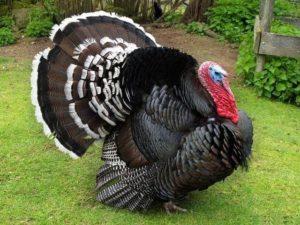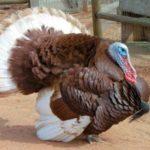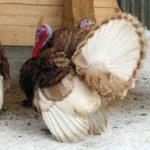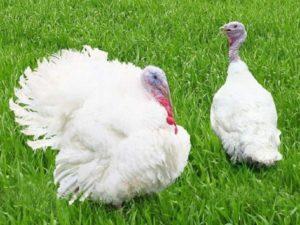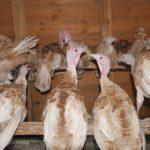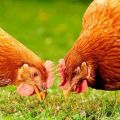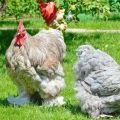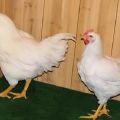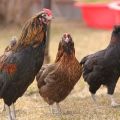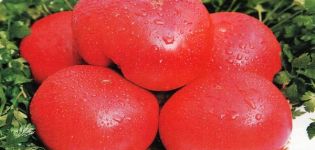Description and characteristics of fawn turkeys, their breeding and care
The Uzbek fawn breed of turkeys was obtained through careful selection. As a result, scientists managed to get birds that are maximally adapted to growing in Asia. The birds are widespread in the North Caucasus. They are also actively bred in Tatarstan and Uzbekistan. In order for the birds to grow and develop normally, it is important to provide them with careful care. Balanced nutrition and the prevention of pathologies are of great importance.
The history of the appearance of a fawn turkey
This Uzbek breed was obtained in Central Asia by the famous breeder N. Zolotukhin. The poultry breeder, together with a team of scientists, carried out intensive work. It was aimed at increasing the productivity of birds and their adaptation to different climatic conditions. For breeding, local breeds of birds were used, which were distinguished by high vitality.
Description and characteristics of the breed
The birds of this breed are of medium size. They have a robustly built body and rich red and fawn plumage. Due to the lush feathers, the turkeys seem to be quite large. They are characterized by an elongated and thin neck, as well as an average head. The paws and beak are small.
This breed is characterized by not too high egg production parameters. The turkey produces 60-65 eggs throughout the year. However, 68% of them are obtained fertilized and can be used to hatch chicks using an incubator.

Despite the relatively low egg production, the birds easily adapt to different conditions of keeping and are characterized by high vitality. Therefore, the hatched offspring survive and reach adulthood. The disadvantages of the breed are considered to be insufficient early maturity and a slow growth process.
These turkeys are characterized by a great taste of meat, which has excellent dietary properties. Therefore, this product is suitable for people who have to follow a diet.
This bird species is characterized by a calm disposition. Adults rarely fight and do not attack other animals. This is important because birds are large in size. Turkeys of this breed live in small flocks until puberty. Then they also form herds of 1 one male and 2-3 females.
Pros and cons
Features of maintenance and care
Fawn turkeys are undemanding to the conditions of detention. However, some rules still need to be followed. Birds are able to fly, therefore it is recommended to walk birds in aviaries with awnings. In summer, it is worth providing turkeys with free range. For this, it is recommended to protect a large area for birds. The birds are able to walk in the fresh air from early spring to late autumn. And they do it from morning to evening. On a walk, turkeys eat grass and insects. This helps to reduce feed costs.
In winter, birds should be kept in a dry and warm barn. There should be no drafts in the room, as this will lead to the development of pathologies and even the death of birds.
A ventilation system is recommended in the house to avoid musty air. Straw or sawdust should be used as flooring. Before settling birds in the barn, all surfaces should be treated with disinfectants. This will help avoid the development of dangerous pathologies.

Feeding the birds
Turkeys need a varied diet. It is especially important to monitor the diet in winter when birds live indoors. Adults should be fed three times a day. Turkeys should be given wet mixtures in the morning and evening. It is recommended to add chopped greens to them. In the evening, grains are poured into the bird feeders.
The stores sell ready-made feed for turkeys. They can be used to replace cereals or dilute wet mash. To maintain a normal weight, males should be given the following foods in the evening:
- sprouted grains of barley, oats or wheat;
- carrot;
- cheese;
- beans, peas and other legumes;
- grain minerals.
For females, yeast, sprouted cereals, feed with B vitamins are introduced into the diet. This helps to make eggs of better quality. Also, herbal flour and chopped root vegetables are introduced into the diet.
Pale turkeys need a lot of water. It is recommended to pour it into small tanks or buckets. The birds will turn over the other container. In order for birds to receive a sufficient amount of carotene and vitamin C in winter, it is recommended to add spruce and pine needles to wet mixtures. Beforehand, it should be well chopped.
How to breed turkeys?
Only the best turkeys should be used for breeding birds. In this case, the parent flock is finally formed at the age of 6 months. Eggs should be collected daily. It is important to ensure that they are intact and free of damage. It is better to use an incubator for breeding turkey poults. It is recommended to clean and disinfect well before laying eggs.
Possible diseases of the breed
Pale turkeys are distinguished by strong immunity. However, it is important to bear in mind that the breeding herd often has heart and liver problems. Therefore, the birds should be given special means to maintain these systems.
To prevent infectious pathologies such as helminthiasis, smallpox, tuberculosis, it is worth monitoring the condition of the poultry house. To do this, it is disinfected with "Chloroform" or "Chlorophos". Fawn turkeys are popular with farmers. They are characterized by undemanding care and good survival rate. At the same time, it is important to properly feed the birds and provide them with free range.
